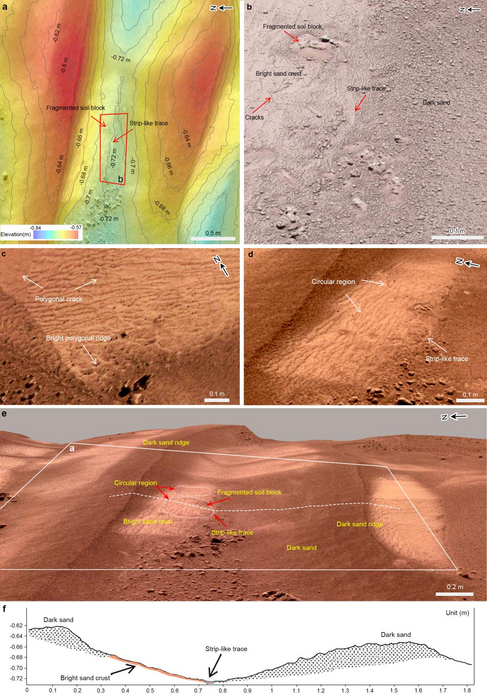China's malfunctioning Mars rover may have found evidence of recent water on the Red Planet
Data from China's unresponsive Zhurong rover suggests that Mars had snow and frost as recently as 400,000 years ago.

Mars may have had liquid water on its surface as recently as 400,000 years ago, data from China's Zhurong rover suggests.
Researchers used three of the craft's instruments to sample sand dunes from Mars' Utopia Planitia, a low-lying region in the northern hemisphere. In the region's' distinct, salty cracks, researchers believe they have found trace evidence of water from much more recently than previously discovered.
"We inferred that these dune surface characteristics were related to the involvement of liquid saline water formed by the subsequent melting of frost/snow falling on the salt-containing dune surfaces," Qin Xiaoguang, a geophysicist at the Chinese Academy of Sciences and first author of the new study, said in a statement. The findings were published April 28 in the journal Science Advances.
Scientists have been searching for water on Mars since the late 1800s, when some astronomers mistakenly believed they had spotted "canals" criss-crossing the surface of the Red Planet. Since then, data from various probes, rovers and spectroscopic tools have revealed that a small amount of frozen water exists on the Martian surface at its polar ice caps and inside craters. The rest of the planet, researchers believe, dried up billions of years ago.

But Qin's team's findings could overturn that notion. They determined that patterns of ridges and fissures on Utopia Planitia are most likely the result of thawing snow or frost. What's more, based on the weathering and cratering rate of Mars' surface, the researchers believe that the features formed between 1.4 million to 400,000 years ago. To put that into perspective, the first modern humans (homo sapiens) are thought to have evolved around 300,000 years ago, meaning our early ancestors such as Homo erectus may have walked the Earth while water flowed on Mars.
Zhurong landed on Mars in May 2021 and has covered nearly 1.2 miles (2 kilometers) since then. The rover has been silent since May 2022 when it entered hibernation mode in order to save power over the Martian winter. The team believes that a layer of dust covering its solar panels has since prevented it from waking up. This is not an uncommon end for robots on Mars — a similar fate befell NASA's InSight rover in December 2022.
However, Zhurong has continued to send valuable data back to Earth. It could even help inform future searches for microbes on Mars, which, based on Zhurong's findings, would likely need to be adapted to very salty environments.
Sign up for the Live Science daily newsletter now
Get the world’s most fascinating discoveries delivered straight to your inbox.

Joanna Thompson is a science journalist and runner based in New York. She holds a B.S. in Zoology and a B.A. in Creative Writing from North Carolina State University, as well as a Master's in Science Journalism from NYU's Science, Health and Environmental Reporting Program. Find more of her work in Scientific American, The Daily Beast, Atlas Obscura or Audubon Magazine.









